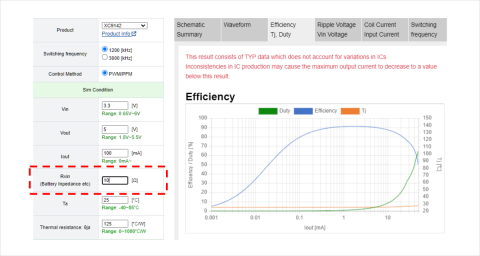Here explains how to calculate maximum output current and efficiency when a resistance component is included with the input side of DC/DC converter.
There is sometimes a resistance component at the input line of DC/DC converter depending on internal impedance, protective parts (fuse, etc.), or noise suppression parts (ferrite bead, common mode, etc.) of power storage device (primary battery, secondary battery, EDLC).
VIN pin voltage of DC/DC converter sometimes decreases due to the resistance component of this input line and it may cause considerable reduction of maximum output current or decrease of efficiency of whole system. Especially for the step-up DC/DC converter, the decrease of maximum output current is noticeable, so it is important to confirm it before making an actual machine.
1. Execution of simulation (select the IC / input the power supply specifications)
Input the simulation conditions for input items and execute simulation.
Step 1. Select a product
Step 2. Select oscillation frequency
Step 3. Select an operation mode
Step 4. Input the power supply specifications (Vin / Vout / Iout / peripheral component values etc.)
Input the resistance component (internal impedance of battery, DCR of passive components, etc.) before the input capacity of DC/DC converter to "Rvin".
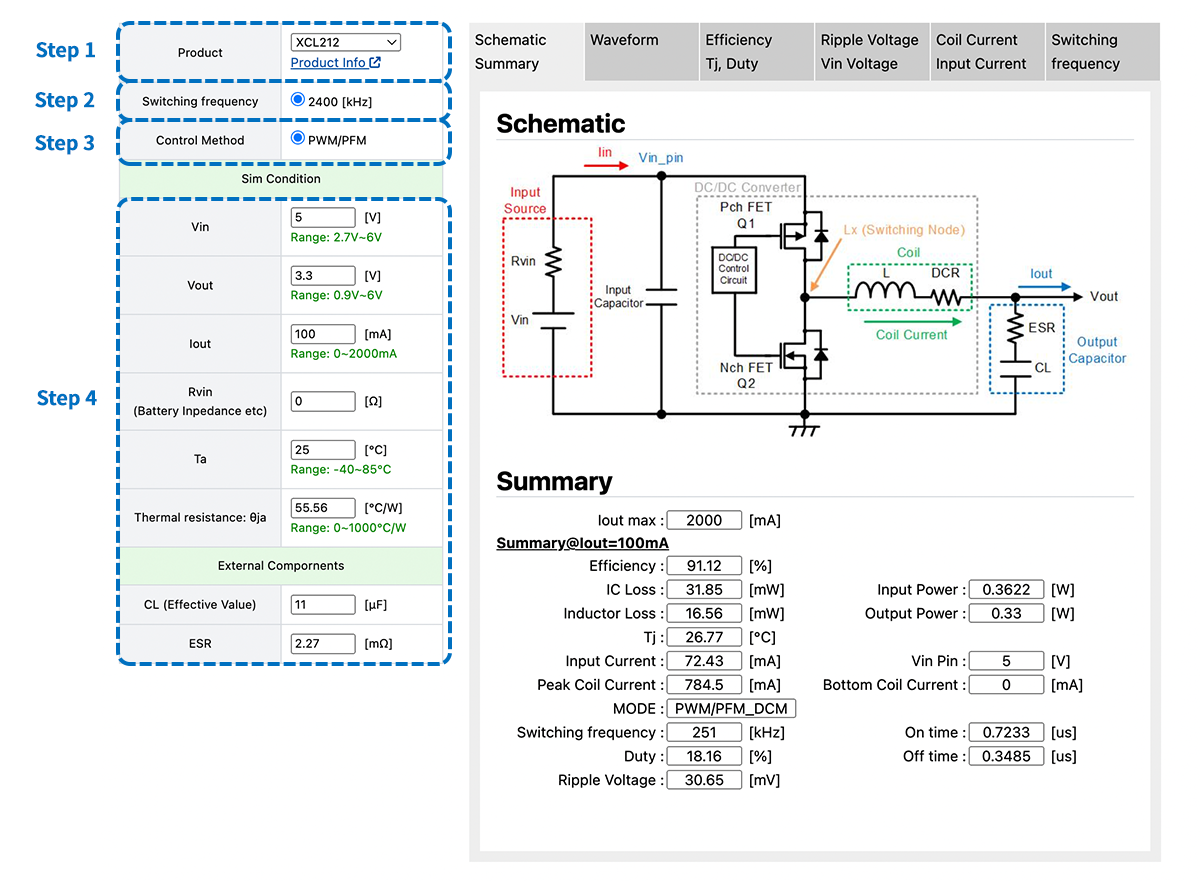
2. Effects of Rvin on maximum output current and efficiency
It is possible to confirm the maximum output current from "Summary" tab and the efficiency from "Efficiency / Tj / Duty" tab as previously explained.
Here explains maximum output current and efficiency when Rvin is 0Ω to 10Ω using PWM/PFM control type step-up DC/DC converter XC9142 series 1.2 MHz as a concrete example.
As you can see from the results shown below, while Rvin increases, the maximum output current considerably decreases and the efficiency at heavy load is extremely low.
As shown in this result, with the equipment that uses coin battery, dry cell, or secondary battery with high internal resistance or equipment that uses poly fuse with high DCR, etc. the maximum output current considerably decreases due to these resistances and the load device does not operate normally.
Conducting the simulation giving consideration to Rvin can validate the system configuration before confirmation with actual machine and it can contribute to reduction of backtracking on design.
(a) Rvin=0Ω ⇒ Iout max=660mA
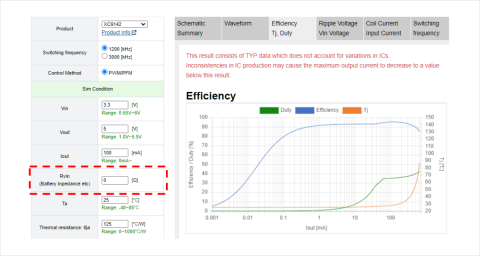
(b) Rvin=1Ω ⇒ Iout max=380mA
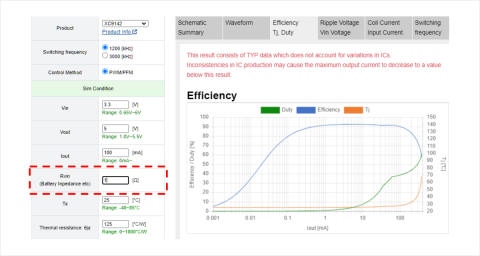
(c) Rvin=5Ω ⇒ Iout max=97mA
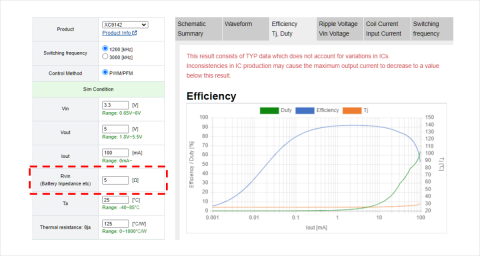
(d) Rvin=10Ω ⇒ Iout max=49mA
